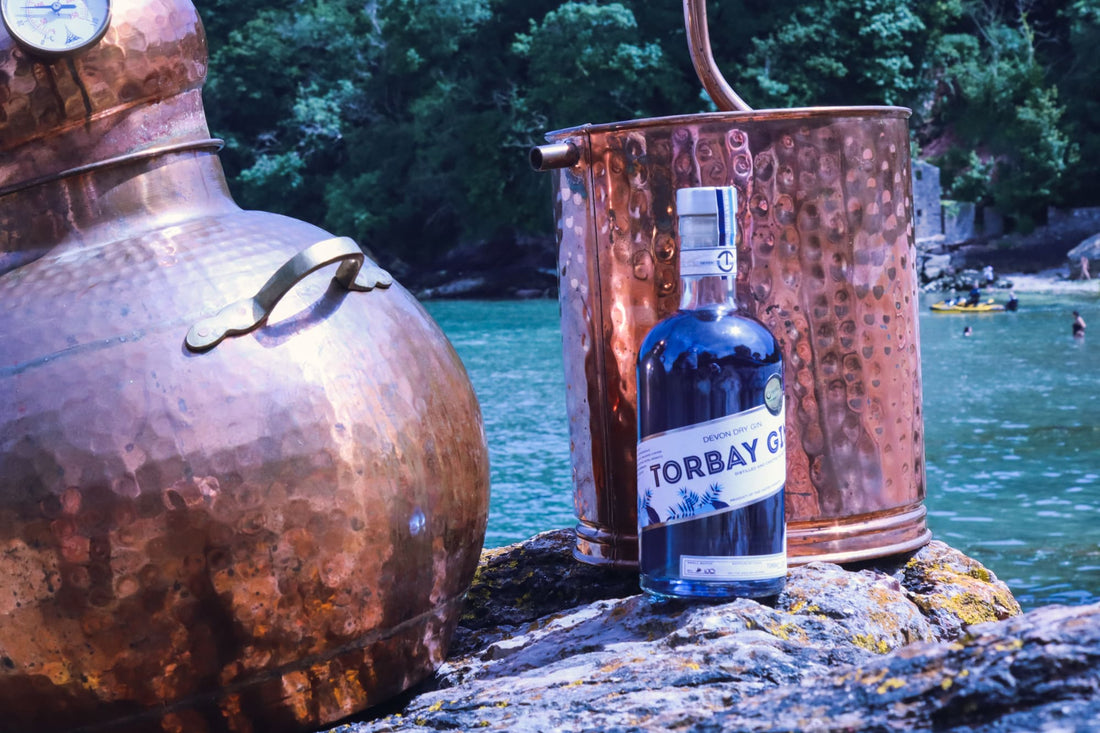Gin has come a long way from its early days as a medicinal spirit — but what is gin made from, exactly? These days, it’s best known as the crisp, botanical base for classics like the G&T or a dry martini.
In this post, we’ll answer the question “What is gin made from?” in detail, looking at its core ingredients, how it’s distilled, and why it’s not quite the same as vodka (though they’re more closely related than you might think). Whether you’re just curious or trying to choose the right bottle, here’s what you need to know.

So, What Is Gin Made From?
At its core, gin is made from two key elements: a neutral base alcohol and a selection of botanicals — with juniper taking the lead. To legally be called gin, the spirit must have a dominant flavour of juniper berries. That’s what gives gin its signature piney, slightly peppery character.
But juniper is just the starting point. Gin makers add a variety of other natural ingredients like coriander seed, citrus peel, angelica root, orris, and spices to create their own unique flavour profiles. The result is a clear, complex spirit that’s both refreshing and versatile.
The Key Ingredient – What Is Juniper and Why Does It Matter?
Juniper is what makes gin… gin. Without it, you’ve just got flavoured vodka. Juniper berries (which are technically small cones from the juniper tree) are packed with aromatic oils that give off that fresh, pine-like scent and flavour that gin is known for.

What Alcohol Is Gin Made From?
Gin starts life as a neutral spirit — essentially a very pure, very strong alcohol made by distilling fermented grains like wheat, barley or corn. It’s similar to vodka in this sense: both are clear, clean spirits with little to no flavour at the start.
Some distilleries produce this neutral spirit themselves, while others buy it in, allowing them to focus purely on the flavouring process. Either way, the base must be distilled to a high ABV (typically around 96%) and purified, so it acts as a clean canvas for the botanicals that come later.
What’s important to know is that it’s not the alcohol that defines a gin’s character — it’s what gets added to it.
Is Gin Made from Vodka?
This is a common question — and the answer is: sort of.
Gin and vodka can both be made from the same base spirit. In fact, many distillers start with neutral grain spirit (which is essentially unflavoured vodka) and then redistil it with juniper and other botanicals. So yes, gin can be made from vodka — but that’s not the full story.
The difference lies in what happens next. Vodka is typically filtered to remove flavour, whereas gin is all about adding flavour. Through a second distillation process, gin absorbs the oils and aromas from the botanicals, transforming it into a completely different spirit.
So while they share a common starting point, gin is not just “flavoured vodka” — it’s got its own category, regulations, and identity. The juniper makes sure of that.

How Is Gin Made? A Step-by-Step Distillation
Once you’ve got your base spirit and your chosen botanicals, the gin-making process begins. Here’s how it usually works:
Dilution:
The high-strength neutral spirit is watered down to around 50–60% ABV, ready to absorb flavour. .
Botanical infusion:
The botanicals (including juniper) are either steeped in the spirit or placed in baskets so that the alcohol vapours can pass through them. This is where the flavour magic happens.
Redistillation:
The infused spirit is then distilled again, often in a copper pot still. The resulting vapour carries the essential oils and aromas, which are condensed back into liquid form.
Blending and bottling:
The concentrated gin is then diluted to bottling strength (usually around 40–45% ABV), rested for flavour balance, and bottled.

Different Types of Gin
While all gin must be flavoured with juniper, there are a few distinct styles you’ll come across:
London Dry Gin
Despite the name, it doesn’t have to be made in London. This style is known for its clean, crisp taste with no added sugar or flavourings after distillation. Think classic gins like Beefeater or Tanqueray.
Plymouth Gin
A protected style that can only be made in Plymouth. Slightly earthier and softer than London Dry.
Old Tom Gin
A sweeter, rounder style that was popular in the 18th and 19th centuries. It’s great in classic cocktails like the Tom Collins.
Contemporary/Craft Gins
Many modern gins focus on unique botanicals and local ingredients, sometimes softening the juniper to highlight other flavours like citrus, floral notes, or spice.
Every bottle of gin will have its own flavour profile — and that’s part of the fun. Some are zesty, some are herbal, and others might lean warm and spicy. But all of them share that juniper heart.
A Short History of Gin
Gin has roots going back to the 11th century, when monks first started infusing alcohol with juniper for its supposed medicinal benefits. But it really took off in the 1600s, thanks to the Dutch invention of genever — and from there, it made its way to England.
By the early 1700s, gin was everywhere in London. It was cheap, strong, and easy to make — which led to the infamous “Gin Craze.” Eventually, regulations improved, and the quality of gin began to rise.
In the 19th century, the invention of the column still made it possible to produce much cleaner base spirits. This led to the London Dry style we know today, and eventually to the boom of the gin and tonic, which was born in the British colonies as a way to make anti-malarial tonic water more palatable.
Fast forward to the 21st century, and gin is having another golden age — with small-batch distilleries popping up across the UK and beyond, experimenting with new botanicals and techniques.
The Final Word
So, what is gin made from? In short: it’s a neutral spirit flavoured with juniper and other botanicals, carefully distilled to create a clean, complex drink.
Whether you enjoy yours with a wedge of lime, a splash of tonic, or as part of a cocktail, knowing what’s in your glass makes it all the more enjoyable.
Here at Torbay Gin, we stay true to the traditional gin-making process — but with a few coastal twists of our own. From the sea spaghetti and thyme in our original recipe to the tropical spices in our others, our aim is to capture the spirit of the South Devon coast in every bottle.
Fancy tasting the difference for yourself? Explore our range and find the one that suits your palate.

